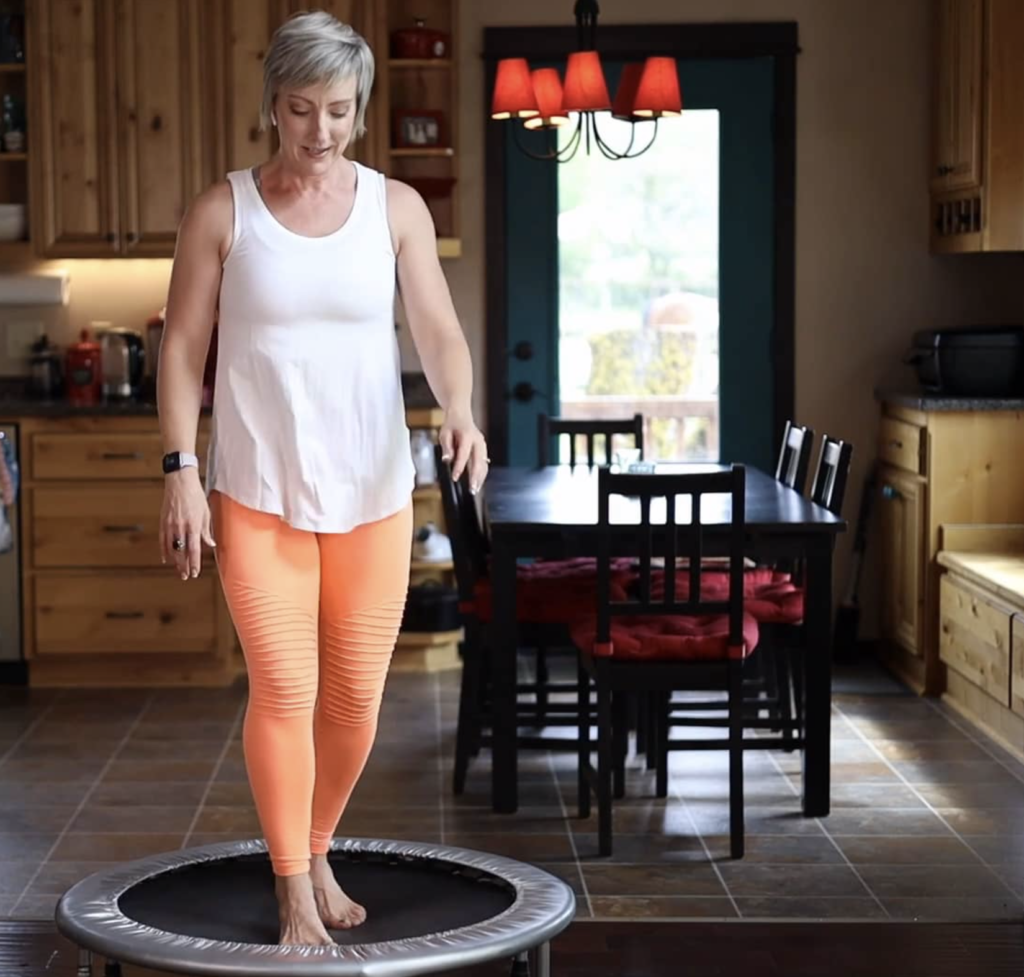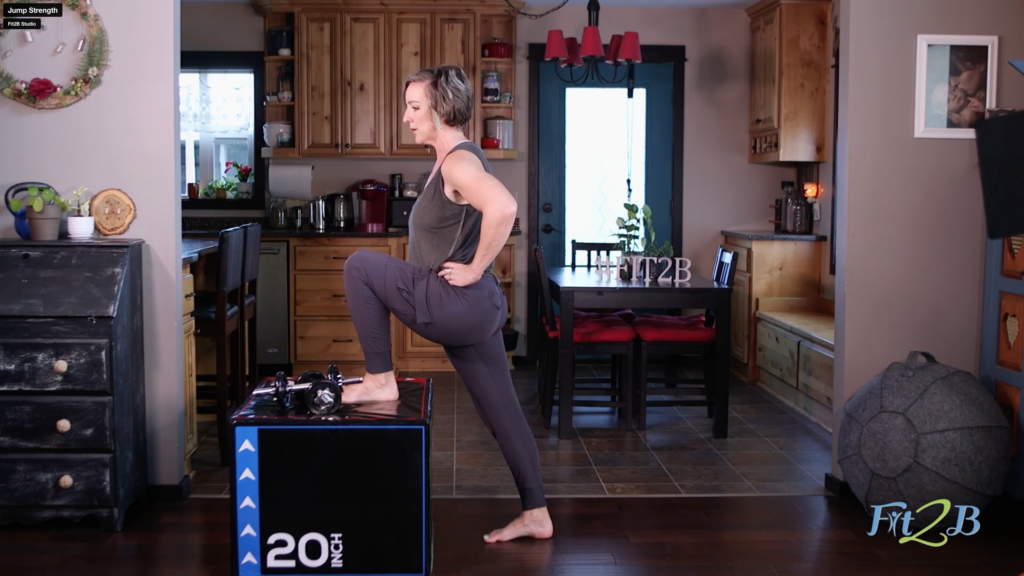Blog
Want to jump again? Here are 10 workouts videos to get you started, leak free!
A few years ago, as I realized I needed to be even more purposeful about maintaining my bone density, I began adding “box jumps” into my personal circuit of exercises. Jumping is good for your bones, however, you do NOT have to jump up onto something like a box to reap the benefits. Starting with small bounces on your toes or a mini trampoline is a great place to start preparing for bigger jumps, plus it’s good for your lymphatic system which facilitates detox.

6 Exercise Videos to Help You Jump without Leaking
Here on Fit2B, we offer hundreds of professionally filmed home workout videos. Several of them happen to be ones that will teach you how to jump without hurting {or messing} yourself. Here are several exercise routines that that are in our membership library:
Dynamic Pelvic Floor Routine 5-Minute Jump Progressions Vintage: Jump Change Perimenopower Lime Launching Jump StrengthWe also have mini trampoline workouts!
Also known as “rebounding,” when you jump on a small trampoline, it can lessen the impact you might feel in your pelvic floor muscles as sensations like downward pressure, bulging, a tampon coming out, or urges to pee. However, bouncing is bouncing, and finding your strategy to manage those sensations is key!
Here are the rebounding routines we have filmed so far! More are coming!
Rebounding Basics Rebound Cardio I Rebound Cardio ii Rebound Cardio iii - coming Nov '24Hold up, what if you feel downward pressure, bulging sensations in your bum or belly, the urge to urinate, or leaking when you start to bounce or jump? Should you stop?
Nope, those workouts up there are designed to get you jumping without leaks!
A lot of my own girlfriends still truly believe that leaking is just part of their lives now that they’re in midlife after having kids. Wrong. If you leak when you leap, laugh, cough, yell, or sneeze, that’s not normal! It’s common, but that doesn’t make it normal. In fact it’s quite treatable!
If your pelvic floor muscles feel like that when you’re jumping or bouncing, your body is giving you a yellow light to slow down and adjust your strategy.
Notice I didn’t say “red light” or “stop” to all jumping forever?
Story time: As I write this, I’ve just finished teaching a local group circuit workout class that included some rebounding on a mini trampoline. While jumping pretty high, one gal told me she felt like she was “falling out down there.” I didn’t freak out, didn’t make her stop, didn’t order her to never jump again.
Rather, I had this client pause {yellow light} asked her to tell me more, and then offered her a couple of strategies to try based on what she shared with me: Bounce a little softer + lean forward slightly.
Those cues enabled her to keep going without quitting. I also recommend she see a pelvic floor therapist in person because I don’t mess around. I truly believe every woman should see one, and feeling weird on a trampoline is a good signal that it’s time – even if I can help you keep going for a hot minute – for a full evaluation to be sure there’s no prolapse, scar tissue, or disease in the area.

Wait, about those box jumps I mentioned earlier … A lot of people are fine with trying little bounces, but you may feel (justifiably) nervous to jump up onto something. Would you feel better if I told you there’s a natural progression of moves you can do – like the one I’m doing in that photo up there – that will help you build confidence to jump? That you don’t need to do BIG jumps until you’re ready? And you’ll know when you’re ready!
There are several movements and muscle activities that play into a single jump. If you want to jump UP onto something, those contributing movements get a bit more complex, but they aren’t anything you haven’t already done: raise your knee, raise your arms, a little squat, a little hop.
Jump Strength & Lime Launching are the two final workouts in that line up I listed above which offer the breakdown of skills you need to be able to jump up (plus the practice of those skills) which is a whole workout. The ability to jump forward or upward will happen after you’ve practiced the skill progression for a while, and that’s where the workout is: that work on those skills! All those workouts up there are what will build the connection and power you need to launch yourself.
No box jump? No problem!
You could use the first 1-2 steps on your stairs, like I mention in this short video! If you have issues with your core and want a variety of fun home workout videos, you’re in the right place because here on Fit2B we are specialists who know how to help you exercise while also teaching you how to reduce leaks, minimize your ab’s diastasis recti, protect your spine & knees, and {most importantly} warm up for the real workout: life!
Leave a comment!
Have you been able to jump with confidence recently? What’s held you back from bouncing? What has motivated you to bounce? Have you ever tried rebounding or box jumps, and if so, how did your body handle those activities? What were you taught about leaking while jumping? Do you think it’s possible for you to improve your pelvic floor? We do!!!
